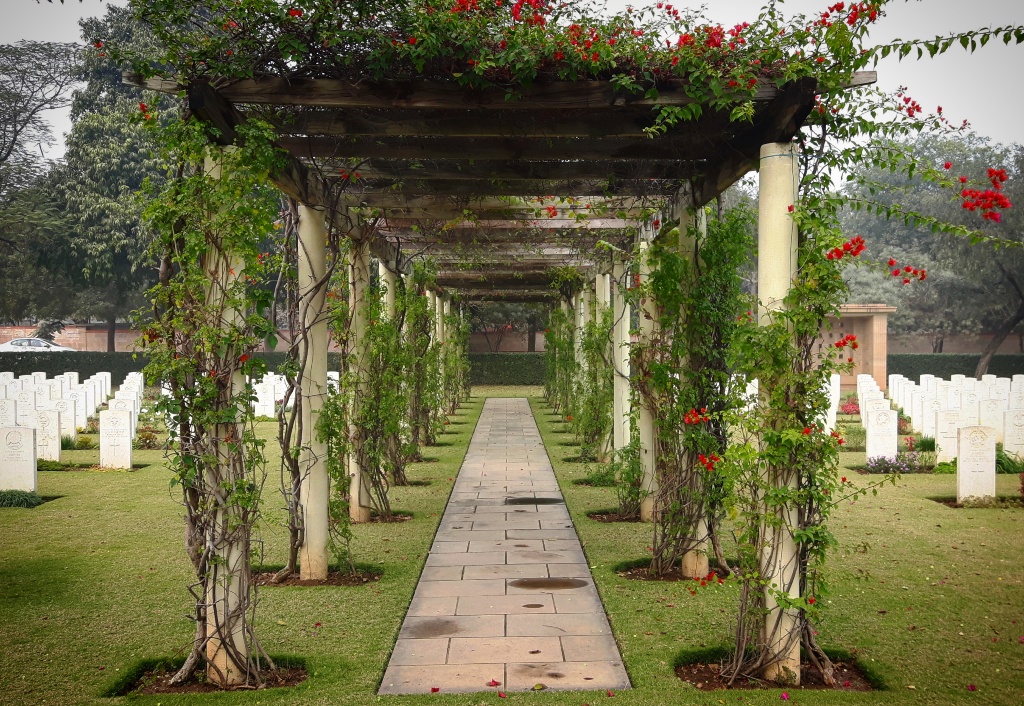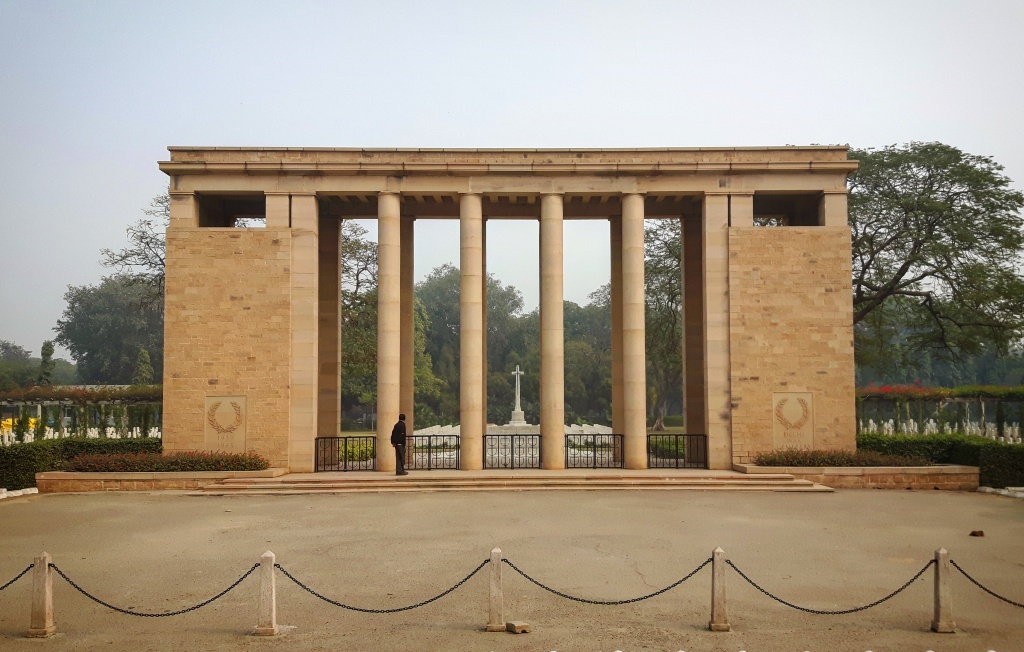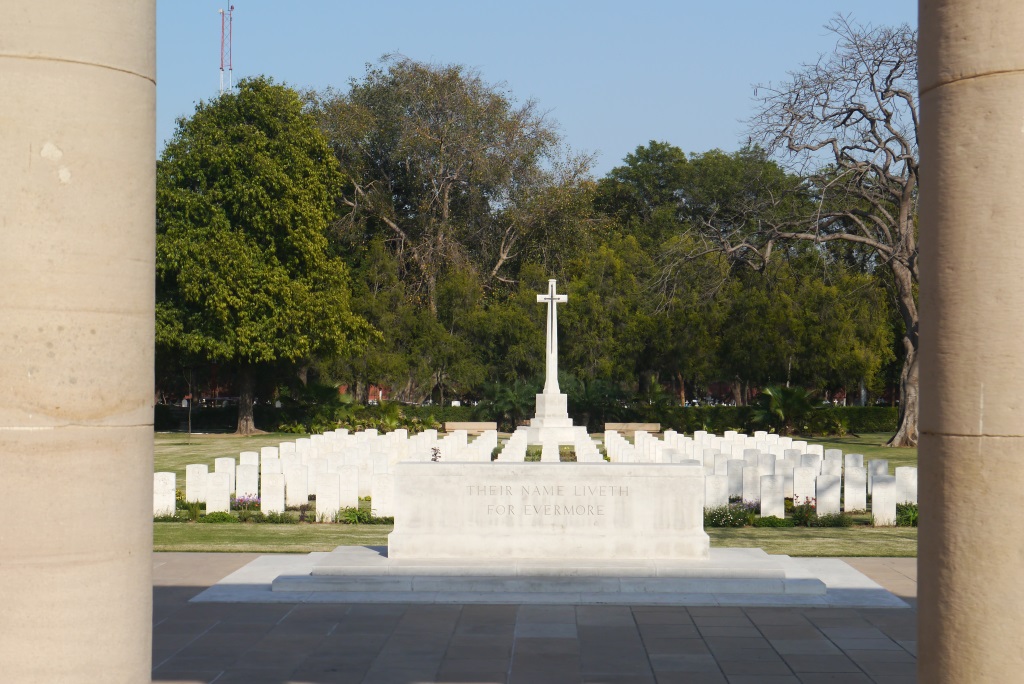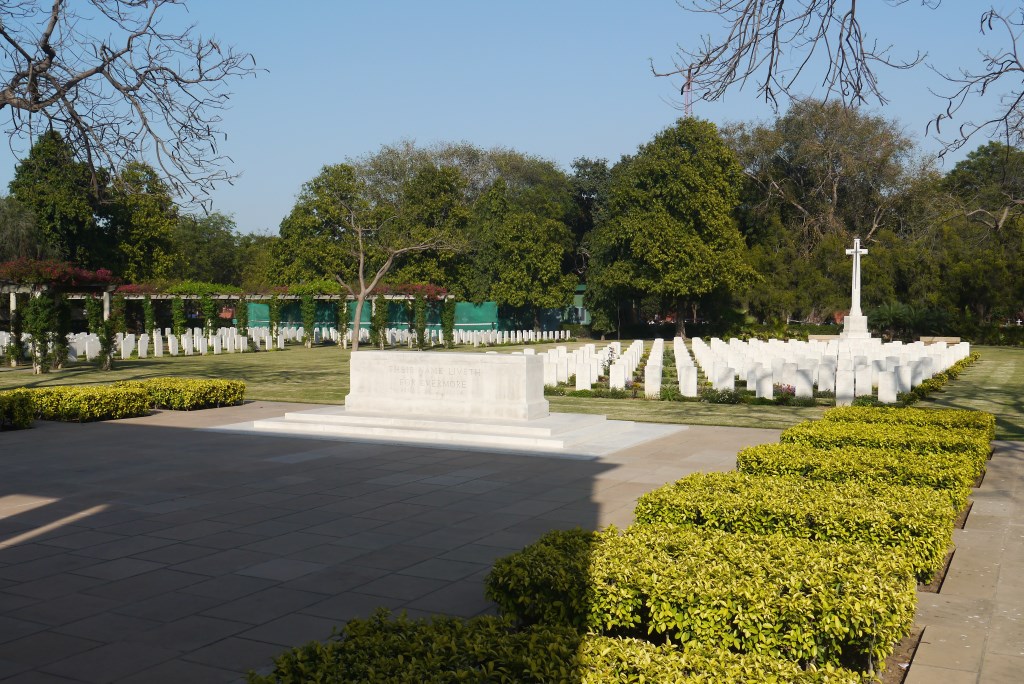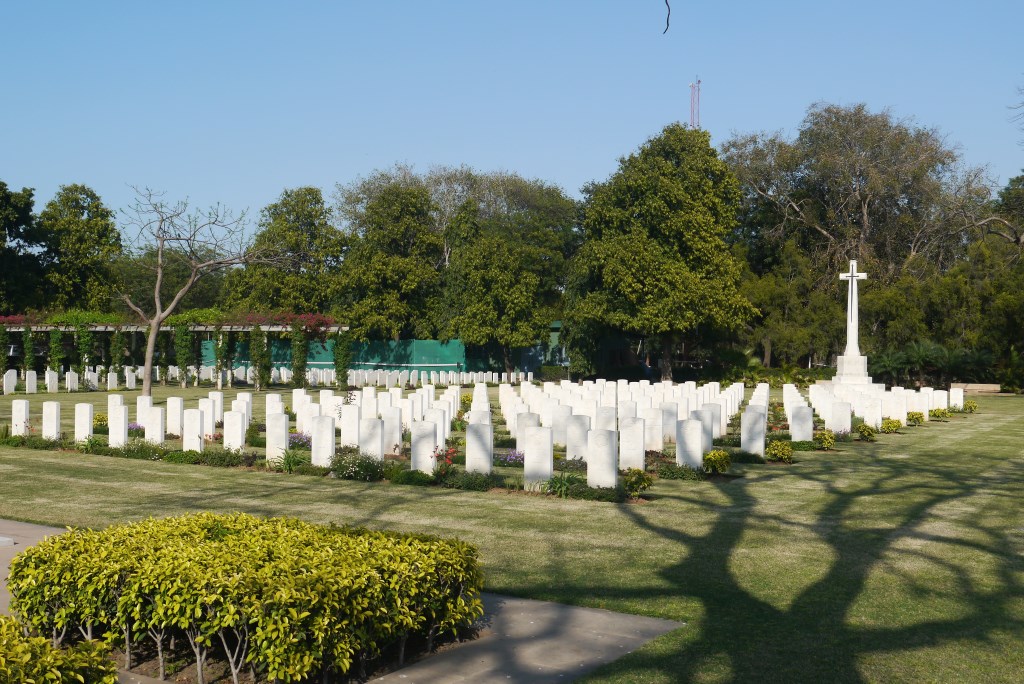Delhi War Cemetery
- Country India
- Total identified casualties 1154 Find these casualties
- Identified casualties from First & Second World War
- GPS Coordinates Latitude: 28.61624, Longitude: 77.14542
Cemetery Spotlight - Delhi War Cemetery
The Delhi War Cemetery is in the Delhi Cantonment area of New Delhi, India. Covering approximately 10,000 square metres, the cemetery was designed by H. J. Brown, an associate member of the Royal Institute of British Architects.
Established in 1951, the cemetery serves as the final resting place for 1,154 Commonwealth service personnel who died during the First and Second World Wars.
It contains graves of individuals from the United Kingdom, India, the Netherlands, Canada, Australia, New Zealand, and Poland. The majority, 821, were from the army, while 296 served in the air force.
The cemetery was created to bring together graves from northern Indian cantonment cemeteries, including those in Allahabad, Cawnpore, Dehra Dun, and Lucknow, ensuring their respectful preservation and commemoration.
In 1966, 99 First World War burials were moved into the cemetery from Nicholson Cemetery, Kashmir Gate, Delhi, so that their permanent maintenance could be assured.
A Roll of Honour is present at the site, which has the names of the 25,000 service personnel of the forces of undivided India who died during World War II. Since the last rites and disposal or keeping of remains vary by religion and country, the memorial is a commemoration for those with no known war grave.
Stories and People

The Delhi War Cemetery is the final resting place of several notable individuals.
Among them is Major General Charles Sumner Lund Hertzberg of the Canadian Army, who died in 1954 from smallpox while on a special assignment in India.
Another individual honoured here is Leading Aircraftwoman Maureen Grundy of the Women's Auxiliary Air Force, commemorated through a special memorial.
Additionally, the cemetery includes 32 special memorials for service personnel whose remains could not be located.
The youngest buried here are four 18-year-old service members, while the oldest is Major Reginald Hamilton Richmond of the 5th Royal Gurkha Rifles (Frontier Force).
Maintenance and Operations

The CWGC takes meticulous care of the Delhi War Cemetery. Regular maintenance includes mowing lawns, trimming hedges, tending flower beds, and preserving architectural elements like the Stone of Remembrance, the Cross of Sacrifice, and the Delhi Memorial. The grounds are designed to provide a peaceful and reflective space.
Delhi’s extreme climate presents a challenge, particularly during the summer months when temperatures can exceed 45 degrees Celsius. To manage water usage effectively, the team uses efficient irrigation systems and waters the grounds early in the morning. Staff safety is also a priority, with working hours adjusted to avoid the intense midday heat.
Horticulture and Environmental Sustainability

Maintaining the cemetery's gardens in Delhi's challenging climate requires careful planning. The CWGC team uses drought-resistant plants and water-efficient irrigation systems. Regular soil assessments and eco-friendly fertilisers ensure the greenery remains vibrant without excessive environmental impact.
Sustainability is a key priority. Sprinkler systems reduce water consumption, and native and adaptive plants are chosen to minimise the use of chemicals. Green waste is also recycled to produce vermicompost, which nourishes the soil and reduces waste. These environmentally conscious practices contribute to the long-term preservation of the cemetery.
Public Reactions and Reflections
The cemetery is often visited by researchers, historians, and family members of the fallen. Visitors frequently comment on the site's tranquil and well-maintained environment. Many visitors also acknowledge the cemetery's significance as a historical landmark and a place for remembrance and reflection.
A Highlight for Visitors

The Stone of Remembrance, inscribed with the words "Their name liveth for evermore," and a Cross of Sacrifice are significant features at the cemetery. The Stone of Remembrance was designed by British architect Edwin Lutyens, while the Cross of Sacrifice was designed by Reginald Blomfield. One of the most striking aspects of the Delhi War Cemetery is its immaculate landscaping.
Visitors often note the serene beauty of the floral and foliage borders, the neatly maintained lawns, and the carefully preserved architectural features. Combined with the stories of those commemorated here, the cemetery offers a deeply moving and reflective experience, encouraging visitors to pause and remember the sacrifices made during times of war.
Location information
Proceed to Delhi Cantonement by taking the Ring Road in the direction of Nariana from Dhaula Kuan multi-level crossing and continue for 3 km to reach Brar Square traffic junction (adjacent to BASE Hospital). There are roadside boards on the right side of the road both sides of this junction. Take a right turn over the railway crossing and after apprximately 1km, you will find the cemetery on the right hand side of the road.
Latitude 28.61624
Longitude 77.14542
Visiting information
The cemetery is open Monday to Friday from 7.45am - 5.00pm GMT. For weekends and other festival holidays, the main entrance is locked, but access to the cemetery is possible via the side entrance next to the cemetery office building.
Wheelchair access to the cemetery is also possible at all times via the side entrance as there are steps at the main entrance.
History information
Delhi War Cemetery was created in 1951 when graves from many cemeteries in northern India were moved into the site to ensure their permanent maintenance. Among them are graves from cantonment cemeteries in Allahabad, Cawnpore, Dehra Dun and Lucknow. There are now 1,022 Commonwealth casualties of the Second World War buried, or commemorated by special memorial, in this cemetery together with a number of war graves of other nationalities, mostly Dutch.
In 1966, 99 First World War burials were moved into the cemetery from Nicholson Cemetery, Kashmir Gate, Delhi, so that their permanent maintenance could be assured.
Delhi War Cemetery also contains the DELHI 1914-18 MEMORIAL, which was built to commemorate 153 casualties buried in Meerut Cantonment Cemetery whose graves could no longer be maintained. However, in recent years, the Commission has re-instated these graves.
More than 25,000 servicemen of the forces of undivided India died during the Second World War in non-operational zones, for example while serving with regimental depots or with other static units. Their remains were accorded the last rites and disposal required by their various religions and their names are commemorated at memorials in the capital cities of India and Pakistan. The DELHI 1939-45 WAR MEMORIAL forms the entrance to Delhi War Cemetery and an identical memorial stands in Karachi War Cemetery. No names appear on the memorials but a Roll of Honour at each site, one in Hindi, the other in Urdu, record the names of those commemorated.


